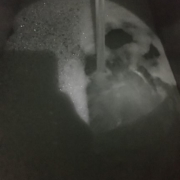Dispatch from the Sugarwoods – 3/13/20
It’s 4 a.m. on the 13th of March. A hard rain on the roof. The house is quiet otherwise, save for the woodstove – it ticks comfortingly as it heats up and the metal expands. I’m drinking coffee and building momentum to get out there again. A small radio in the kitchen had been broadcasting news about the COVID-19 microbe that’s terrorizing the world, but I shut it off to hear the rain and the woodstove ping.
The 1,600-gallon sap tank at the bottom of the hill will be close to overflowing; the 2,500-gallon tank across town probably already has. And it’s warm – too warm. The sap will soon begin to spoil. It looks clear when the weather is cold and the season is fresh. Then it goes to a sort of bluish-gray as ambient temperatures rise. When temperatures get above 60, the sap begins to look like watered-down milk. In the bottom of the tank there are handfuls of white precipitate – I suppose that gunk is yeast.
There’s so much to tell you about this season, and I will. But for now I’ll leave you with the idea that time is of the essence, and the image of milky sap. Microbial colonizers – harmless to humans but brutal to syrup quality – have inundated our sap collection system and their populations are exploding. In cool sap, microbial concentrations are less than 1,000/ml. In this weather, concentrations can be in the billions, or even trillions, per milliliter.
They feast.


